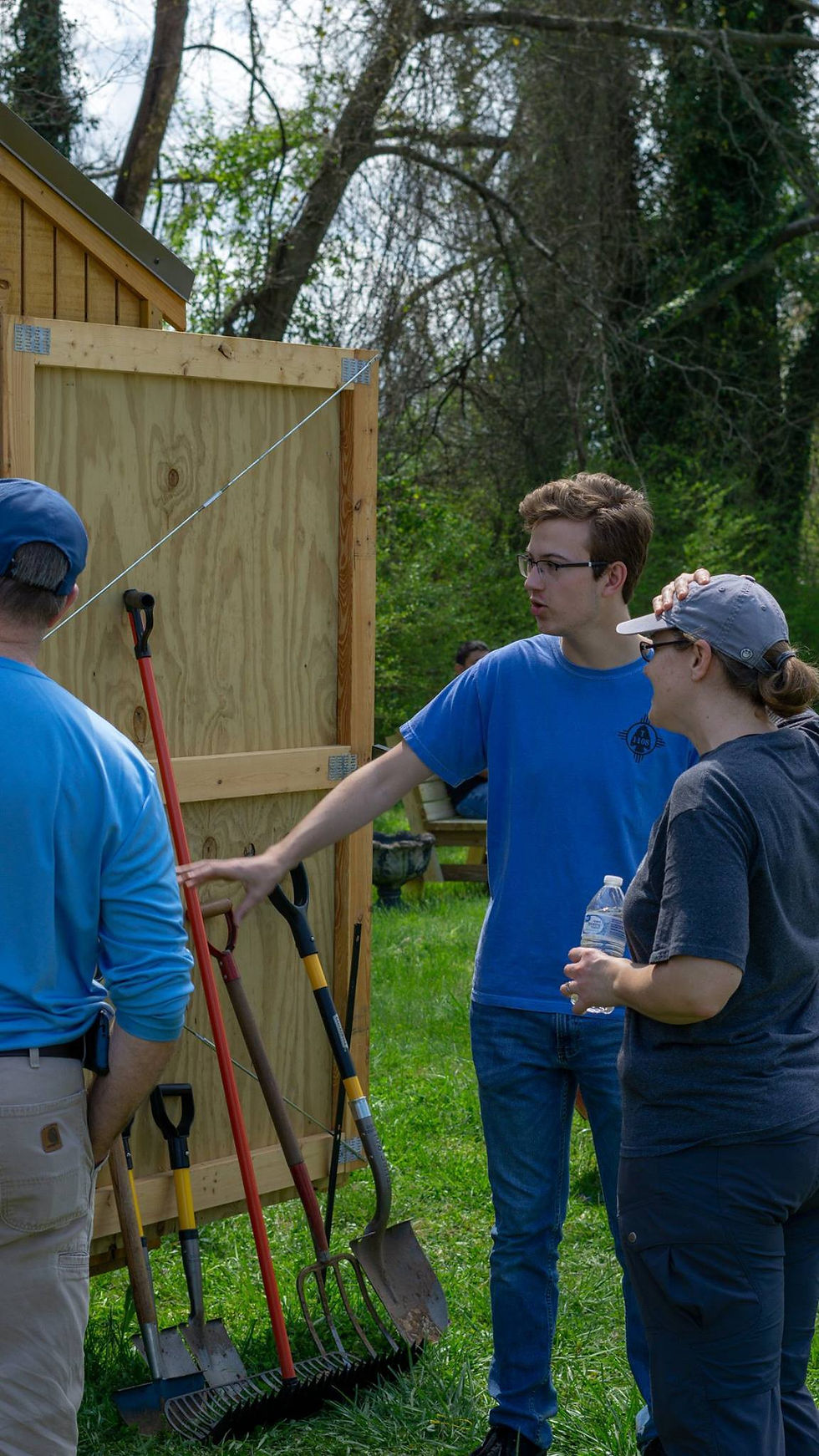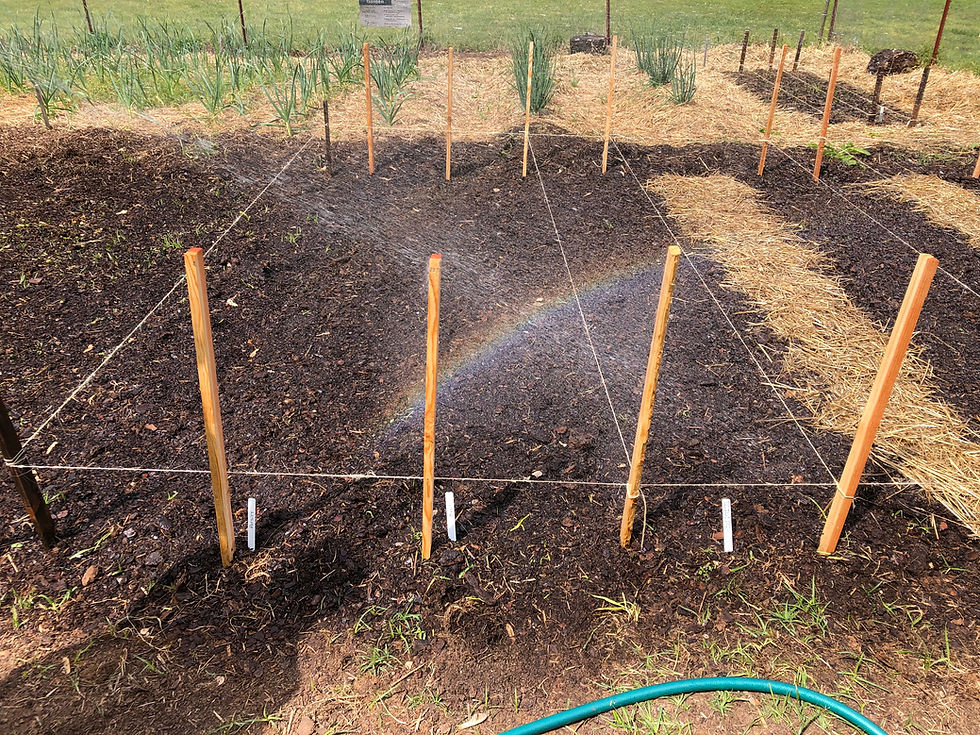Share Space and Start a New Garden
- Jon Mychal Heatherly

- Apr 25, 2021
- 7 min read
Updated: Dec 14, 2021
Start a community garden with friends and neighbors using these simple steps.
Source: jmheatherly.medium.com

Photo by Autumn Shultz
“To plant a garden is to believe in tomorrow.” — Audrey Hepburn.
As warmer days become more frequent and the last frost passes, the time to grow great things is upon us. Despite the increasing prevalence of urban lifestyles, many people still yearn to develop their gardens.
Living in apartments and dense urban settings appears to limit the ability to garden, but not if you know what to do. There are others just like you who wish to garden, and they wonder the same things as you — like how to get involved.
Community gardens are shared spaces managed collectively. Whether on public or private land, this space permits folks to grow things like fruits, veggies, and flowers — in an area that may otherwise remain unused.
Additionally, it enables individuals to garden even if they have no land of their own. A mutual commitment ensures the garden’s needs get met, and it buffers against the likelihood of individual burnout. Continue reading to learn about the benefits and stages of beginning your very own community garden.

Benefits
Why would you want to wake up early in the morning to get dirty in the hot sun for several hours? Oh, gardening — “How do I love thee? Let me count the ways”. Because we frequently live in jungles of concrete and glass, cultivating the soil transports us to a time immemorial.
Growing our food reconnects us to a time of community and shared identity. You may cross paths with another in the garden that you would not have otherwise, and a mutual interest can lead to a life-long friendship.
Gardening shows us that food doesn’t just come from a can, and frequently your effort compensates you with fresh greens, herbs, and more! Participation costs little to nothing beyond your time, and your presence strengthens your community.
The garden holds many lessons to learn. It reminds us of the strength of society through a shared effort towards a common goal and gives a sense of investment and ownership in our communities. Raising our harvest also teaches us the value of quiet and patient persistence.

Likewise, a tended garden provides beauty to spaces that are unsightly or disused. What was once overgrown with brush and litter can be transformed into a vibrant, living greenspace. Unproductive grass lawns morph into valuable green spaces.
Flourishing community gardens help solve the problem of food deserts in urban environments. When local markets with fresh, wholesome food are not within walking distance, a community garden can help satisfy some of that need. Working in the garden encourages a healthier lifestyle, and it often feels like a sanctuary to relax, meditate, or even pray.
Steps to start
So you want to grow a garden, but where do you even begin? No sweat. Starting something new may come across as daunting, but this task becomes more manageable when broken down into parts.
Remember the following process when planning a community garden: seek others who also want to garden and organize yourselves, survey areas for potential garden sites, pursue and secure both donations and funding, prepare the worksite for development, design its layout, delegate responsibilities, and then get to growing!
Use this checklist from Michelle Obama’s “Let’s Move” program to help stay organized.
Find Others

Photo by Autumn Shultz
One cannot community garden alone; ergo, finding others with the same passion is step one. Gauge interest and needs by surveying your target area. Perhaps you canvass the neighborhood and ask neighbors whether or not they want to join, or you can reach out at your church if you attend somewhere.
Other possibilities include posting flyers on local bulletin boards (like colleges and universities), reaching out to your public library, or even posting online to local message boards and social media groups. You may even find great interest among local civic groups, community organizations, and non-profits.
Your state likely has a master gardener program, and master gardeners share their knowledge and expertise with those who have questions. Find your local master gardener program here:
After garnering sufficient interest, schedule and communicate a day to meet and discuss — whether in person or via teleconferencing software like Skype or Zoom. Investigate what skills participants bring to the table, what resources are available amongst the group, and the general wants and needs — whether growing veggies, flowers or both.
Find out who can contribute on regular workdays and coordinate further preparations for the new garden. This moment would also be an ideal time to delegate general responsibilities.
The American Community Gardening Association hosts a central database to find local community gardens or register a new one here: https://www.communitygarden.org/garden
Survey Plots
Next, you will want to make time to look around for plots and places to garden. If you’re with a church, consider asking if there is a suitable spot on the property for communal space. Some churches might even allow you to use some land regardless of affiliation.
Other potential sites could be on a school campus, with permission, of course. Some interested gardeners may offer up a small corner of their yard, and there are even apartment complexes set aside space for tenants to garden. If you see some property and don’t know the owner, you can contact your local county tax assessor to learn that information.

Photo via Murfreesboro Community Gardening
Consider several factors when determining whether an area is suitable for cultivation. First, does the area receive enough sunlight? Thriving gardens require at least 6–8 hours of sun daily, but it needs more than the sun.
Second, sustainable gardens need a water source and should drain well. Ideally, they are flat and within walking distance to where people live. Also, these plots need to be free of debris. Finally, take soil samples to determine soil quality and pollutants — following acquiring permission from the landowner.
For related government resources such as testing soil quality, check out the USDA website here: https://www.nal.usda.gov/afsic/community-gardening
Secure Resources
Pool resources together to get your community garden off the ground as a group. Besides finding suitable plots, note who can provide tools, knowledge, connections to resources like cheap compost or soil, and who has the time and ability to work in the garden.
Local nurseries and individual enthusiasts often provide seeds and starts for free — merely for the love of growing and desire to share it with others. All you must do is ask. Beyond these considerations, you will likely need funding to sustain the garden every year. There are many ways to acquire funding, so take of some sources.
Whether you are a neighborhood group or something else, you can accept donations from members such as $10 a month. You will likely need funding for things like fencing, tools, a shed, and other items not mentioned here. Many components can be provided cheap or free (like seeds or hay), but some require funds to sustain an operation.
You will need tools like hoes, shovels, garden hoses, rakes, stakes, and more! Consider the financial requirements of your plans, and be prepared to scale up or down as necessary. Regardless, you can make it work at any scale.

Photo via Murfreesboro Community Gardening
Finding funds may be as simple as attending planning meetings and proposing a budget request for a church group or civic organization. Another possibility is soliciting donations from local businesses, civic groups, and non-profits.
Attaining non-profit status will assist your quest for funding, so decide whether you want to undergo that process. Some local parks and recreation boards will provide sponsorship, or you can even raise funds through another non-profit using their tax status to allow donors to write off donations from their taxes.
Want additional tips? The ACGA compiled this fact sheet for further information.
Plan Layout
Take the time to make this garden fit your needs and be your own. Be as whimsical or practical as you wish. Weigh the pros and cons of having an entirely communal space or designating individual boxes with perhaps a shared herb garden. Though a plan of action remains essential, remember plans can change as we experience and learn.
Do you want shade trees, a place to rest, or irrigation? Will you make a path? These are but a few examples of questions to consider when deciding upon layout. Of course, you could design a layout on graph paper to scale with a pencil. If you prefer something a bit more tech-savvy, numerous web and phone applications exist to enable all your gardening dreams!
Check out this list compiled by “The Spruce” featuring free garden planner apps.
“Country Living” also compiled a list of garden planning apps, though some may cost a fee.
“GrowVeg.com” has its garden design app with a free trial.

Photo by Autumn Shultz
Prep Worksite
While your group may not yet decide what is to plant, the perfect time to prep your worksite is now. After reaching a consensus, you at least know where the garden shall be. Set up some pages on social media to recruit volunteers, organize some people to meet for a day, and prepare the site for gardening.
Worksite prep involves several tasks like clearing debris, tilling, laying out cardboard, digging for irrigation, putting up a fence, and more. If the community decides upon raised beds, use this day to construct them. Your gardening plans can be as big or small as you like, and resources such as time allow.

Photo by Autumn Shultz
Delegate Responsibility
Find out who can dedicate time to work in the garden. Generally, having one or two people oversee operations ensures consistent adherence to plans and schedules and shared responsibility. Set a day of the week for everyone to meet and work together. Dedicate some people to water regularly.
This process may be informal, or you can hold regular elections to vote for officeholders. You could have a president to coordinate and administrate, a vice-president to share that responsibility, a treasurer to maintain finances, a secretary for documentation and minutes, and even a community organizer to plan regular events and outreach. It is worth mentioning how membership looks and whether there are dues or minimum work hours requirements.
Go Grow
Look at you; you are ready to grow. What once felt daunting and impossible now seems within reach. How wild to think that others also value growing their food! You know exactly where you want to garden, and you secured funding.
Within your small community, you all have the ability, know-how, tools, and everything else you need to manifest this dream into reality. Plan your layout, know your responsibilities, and what you want to plant. No one has ever been as prepared as you to cultivate your heart’s desires. Now go forth, be fruitful, and multiply.

Photo by Autumn Shultz
Additional Resources
Old Farmer’s Almanac: https://www.almanac.com/
Let’s Move Program: https://letsmove.obamawhitehouse.archives.gov/community-garden-checklist
American Community Gardening Association: https://www.communitygarden.org/
USDA Local and Regional Food Systems: https://www.nal.usda.gov/afsic/local-foods-and-communities-0



Comments